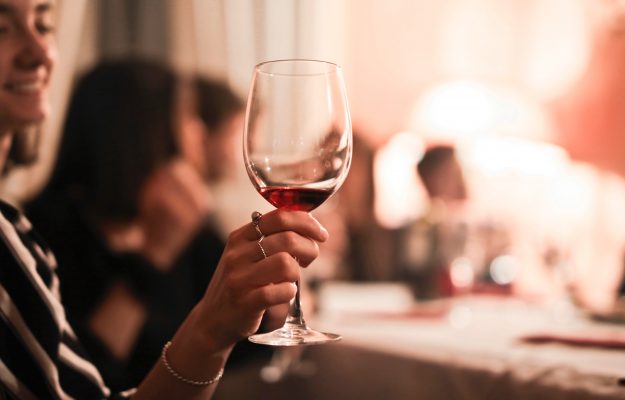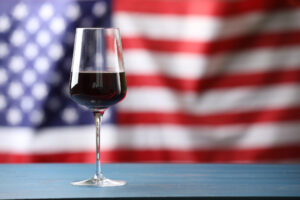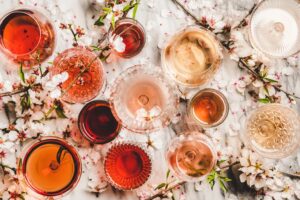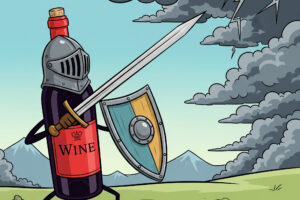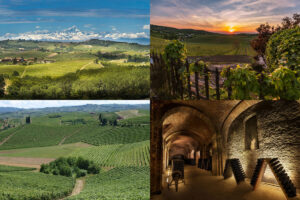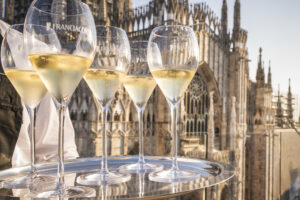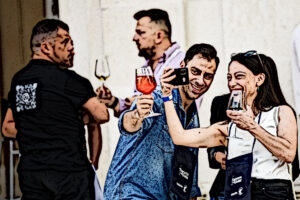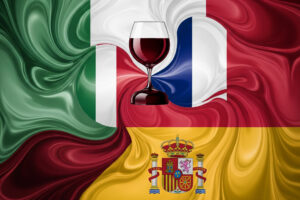The Italian wine tourism offer remains strongly focused on traditional tastings, which account for 70.8% of the total. Special experiences are growing, given the increasing presence of food and wine and picnic proposals, which together reach 18% of the offer, while online events and experiences each account for about 5% of the total. The offer steadily grows during the week, between Monday and Friday, a day when 75.4% of the experiences are bookable, while it is possible to book 60.3% of the proposals on Saturday and only 31.8% on Sunday, despite it being the most popular day. While wine tourism offerings are still focused on tastings, wineries are increasingly customizing their proposals according to their audience. Confirming this, 85.5% of companies say they segment their portfolio of wine tourism experiences. Experiences recommended for wine lovers and sommeliers account for 73.3%, while experiences designed for couples and high-spending customers are on the rise at 48.1% and 47.3%, respectively. Next are experiences for people seeking moments of relaxation and well-being, those for young people and newcomers to the world of wine. Here are the most significant data from the “Wine Tourism and Direct-to-consumer Sales Report 2023”, signed by Divinea, a technology platform dedicated to the management of the wine business, based on data from 300 client wineries.
As was expected, the trend in the average price per person of a single experience is growing steadily. Only one in five proposals is priced below 20 euros, confirming that companies are increasingly valuing their time. While most of the proposals are concentrated in the range between 20 and 50 euros per person, premium experiences, which thus cost between 50 and 100 euros, are growing strongly and account for 18.9% of the total, while those with a price per person above 100 euros are 5.5%. The wine tourism offer is now bilingual throughout the territory, considering that English is spoken in 19 out of 20 companies. 18.2% of wineries are structured to speak German, which is particularly demanded in some regions, followed by French and Spanish.
The average receipt of wine tourism bookings in 2022 was 82.7 euros, down slightly (-3.3%) from 85.5 euros in 2021. Going into more detail about the transactions monitored by the Divinea Observatory, a large portion are between the 20-50 euro range (37.4%) and the 51-100 euro range (36.4%), while premium experiences, with a receipt over 150 euros, are on the rise, accounting for 10.8% of the total. Also stable is the average number of people per booking, which is 2.7: couples account for 61.2% of the total, although single visitors are beginning to weigh in, up sharply from previous years, accounting for 7.9% of all registered bookings.
Looking at the graph of visits, the trend is, on average, upward during the months of the year, until October, where it reaches its peak of visitors. The wine tourism season, which clearly varies between wine territories, confirms that between one in four of the visitors are concentrated between May and October. Looking at the days of the week, visits continue to be concentrated mainly on weekends, particularly during Saturdays. The fact that Sundays present fewer visitors than Saturdays is explained by the fact that fewer than one in three wineries are open on the last day of the week. Coming, finally, to the slots of the day, the most popular are the 11 a.m. and 3 p.m. slots.
Looking instead at the graph of reservations, the trend over the year follows a similar trend to that of visits although, in this case, the month with the most reservation requests was August (in 2021 it was September). The day of the week where the most reservations occurred is Wednesday, while Saturday and Sunday are confirmed to be less suitable days for making reservations. Also changing is the time of day where people make reservations, which is no longer early in the morning or just after lunchtime as in 2021, but changes to be the afternoon around 4 p.m. and the time between appetizer and dinner. Another interesting fact is that reservations show an increasing trend during the days of the month, as if to show that people tend to make such decisions on the last days of each month.
Only 17% of reservations were entered manually by winery staff, usually resulting from requests made by phone, email or through social media, while the vast majority were made online. Among wineries that offer visitors both the option to pay in advance and directly at the winery, only 23.2% prefer to do so on site while 76.8% prefer to do so when booking online. The cancellation rate by wineries is 7.5%, which is still too high, while 4.2% are reservations cancelled a few days before the visit either by the winery or by the visitor, usually justified by illness or unfavorable weather conditions. The time between booking and winery visit is 12 days, which is a consequence of the change in habits after the health emergency since before Covid, bookings were made on average 23 days earlier. Weighing more than 40% are visits between 2 and 7 days after booking while 14.2% and 5.5% are visits a day later or the same day as booking. In all probability, these values would be much higher but only a portion of wineries allow reservations with less than 48 hours notice.
The most popular age group is 25-34, accounting for 1/3 of the total, with the 18-24 age group rising to 22.8%, followed by people aged 35-44, who are 21.2% of those booking. Bookings by the female audience in 2022 accounted for 58.4%, down from 2021’s 66% exploit, but still remaining more than men. Recurring visitors, i.e., those who returned to visit the same company over the course of the year, also went up, accounting for 3.9% this year. Two out of three visits are in Italian and 30.9% in English, leaving negligible percentages for other spoken languages except German, which remains the most widely used language in South Tyrol.
Among the bookings that occurred outside Italy, the majority came from the United States (22.9%). This was followed by Germany (11.7%), the Netherlands (10.5%), Great Britain (8.9%) and Switzerland (5.9%). Experiences acquired as gifts, and thus delivered to a third party, are 14.2% of the total. It is worth highlighting how this option is particularly popular for birthday and Christmas gifts. In fact, 26.5% of gifts are purchased in December, which is equivalent to 70.8% of bookings in the last month of the year, where many companies are closed but, in this way, still manage to monetize with alternative proposals.
Events are a type of experience that is mostly concentrated in the summer season, and has different metrics than traditional tastings. The average price per person is 30.9 euros, with 3.1 participants. It follows that the average ticket is 96 euros, which is 16% higher than other experiences sold. Moreover, the participants in each event-which range from a few people to several hundred guests-are still far more than the groups in the recurring experiences. It follows that these proposals are an excellent opportunity to monetize from the sale of the service while, usually, the incidence of wine sold is significantly lower than in a traditional tasting.
The main channel for acquiring visitors is the website (16. %), followed by social channels (15.2%), which, if well structured, allow for convergence paths to the same website to book a visit. This is followed by visitors who casually stop by because they are passing through the area (12.6%), followed by tour operators and wine tourism portals, both around 10%. Across the various acquisition channels, visitors who come to the winery by word of mouth weigh in, worth 18%.
Copyright © 2000/2025
Contatti: info@winenews.it
Seguici anche su Twitter: @WineNewsIt
Seguici anche su Facebook: @winenewsit
Questo articolo è tratto dall'archivio di WineNews - Tutti i diritti riservati - Copyright © 2000/2025










